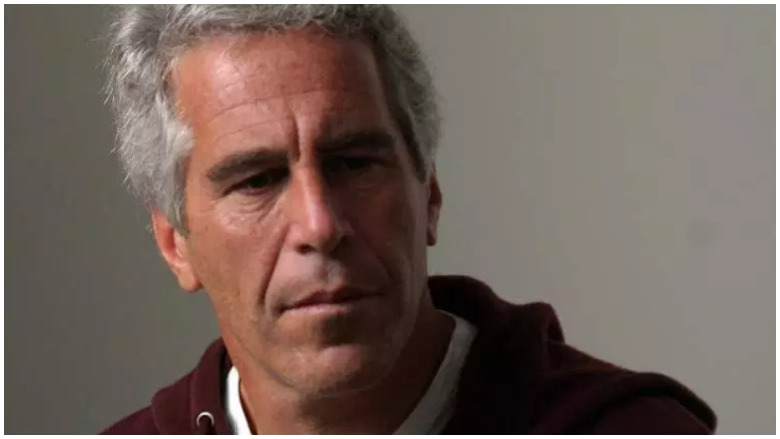
Jeffrey Epstein, the financier whose death in a New York jail cell has sparked raging conspiracy theories, had multiple broken neck bones, including a fractured hyoid bone, The Washington Post is reporting.
The Post report came from sources who have access to the autopsy, as, officially, Epstein’s cause of death has not been released (although multiple sites have reported that it’s an apparent suicide.) The Post indicated in its report that a broken hyoid bone is more common in homicides by strangulation, although it can also occur in hangings. Epstein, 66, had “sustained multiple breaks in his neck bones,” according to the Post exclusive.
Epstein was found hanging in his jail cell, but since that time, numerous questions have been raised about guard checks, why he wasn’t on suicide watch, and so forth. The attorney general has said the Justice Department has learned of “serious irregularities” at the federal facility where Epstein was being held that are “deeply concerning.” AG Bill Barr also called the death an apparent suicide. Epstein was fighting charges of sex trafficking and conspiracy, some of which involved minors as young as age 14.
Jeffrey Epstein was an extremely wealthy investment adviser who hobnobbed with some of the world’s most famous people, including Donald Trump and Bill Clinton.
What does the research say about hyoid bone fractures?
Here’s what you need to know:
Hyoid Bone Fractures Are Indeed Found in Some Hanging Cases But It’s More Common With Strangulation, Studies Found

GettyJeffrey Epstein poses for a sex offender mugshot.
Multiple studies from different countries have backed up several critical points in The Post’s article: Namely that the hyoid bone being broken is more common in strangulation homicide deaths, but it does occur in a fair number of suicides by hanging, especially in older people.
However, TMZ reported that Epstein “either hurled himself off the top bunk or had his feet to the ground and leaned forward to cut off his air supply” and that such an act could explain the hyoid bone breakage. TMZ also reported Epstein “suffered petechial hemorrhaging, caused when someone hangs himself or is strangled or smothered.”
Necks being broken in hangings is a common phenomenon. The book An Introduction to the Work of a Medical Examiner by John Miletich and Tia Lindstrom says that the “drop distance needed to break a neck depends on the person’s body mass…the hanged person’s neck breaks when his falling body reaches the end of the rope, rapidly tightens the noose, and wrenches his neck sideways, dislocating or snapping his neck’s axis bone.”
In fact, there is even a broken bone called a “hangman’s fracture.” It is a “a fracture of the axis in the cervical region. It is often seen with people who try to hang themselves but also occurs in sports or traffic accidents.” It is not clear whether Epstein had this fracture.
Three authors specifically studied broken hyoid bones in hanging cases in the article Fractures of the hyoid bone and thyroid cartilage in suicidal hanging. They conducted “A prospective study of hyoid bone and thyroid cartilage fractures in Thai people who died from suicidal hanging between November 2008 and August 2009.”
The results of that study found that a broken hyoid occurred in about one-fourth of cases: “Twenty male cases of suicidal hanging were reviewed. Fractures of the hyoid bone and/or thyroid cartilage were found in five cases (25%).” This study also noted: “Fractures of the hyoid bone and thyroid cartilage in 25% of Thais who died of suicidal hanging were related with older ages and incomplete hanging but not related with location of the knot.”

GettyJeffrey Epstein.
Another study found that the percentage of hyoid bone fractures in hangings is unclear, as studies have found different percentages. That 2005 article is called Fracture of Hyoid Bone in Cases of ASphyxial Deaths Resulting From Constricting Force Round the Neck.
“Some have claimed hyoid bone fracture in about 20% cases of hanging. Some have claimed hyoid bone fracture in about 68% cases of hanging. They also claimed that hyoid bone fracture increases with age above 40 years due to calcification and immobilization of joints. Some also claimed that hyoid bone fracture increases with using hard ligature for hanging and strangulation,” the article notes.
Another study on the topic was undertaken at the Forensic Science Centre, Adelaide “over a 3-year period from July 1996 to June 1999. There were a total of 40 cases of suicidal hanging with an age range of 17–74 years (average = 35 years; M:F = 33:7). Fractures of neck structures were identified in 19 cases (47.5%) and were more common in older victims and males.” That article was called Fractures of the hyoid bone and laryngeal cartilages in suicidal hanging and ran in the Journal of Clinical Forensic Medicine.

GettyJeffrey Epstein.
R. Keerthi and Abdulhaseeb Quadri explored the issue in a 2016 article called Hyoid Bone Fracture: Associated With Head and Neck Trauma—A Rare Case Report. It was published by J. Maxillofac Oral Surg.
“Fractures of hyoid bone resulting from trauma other than strangulation are very rare,” they reported. “Hyoid bone fracture associated with panfacial trauma are even rarer. They occur more frequently in young individuals, and in men more than in women.” They added: “In general hyoid bone fractures are reported to occur in 50 % of cases of manual strangulation or of ligature strangulation and in 27 % of hanging.”
This study described the hyoid bone:
“The hyoid bone is a U-shaped mobile bone situated in the anterior portion of the neck at the level of the C3 vertebra, in the angle between the mandible and the thyroid cartilage. It’s name originated from the Greek word hyoeides, which means ‘shaped like the letter upsilon’ which represents the 20th letter in the Greek alphabets. It is composed of a body, two greater and two lesser horns and is a unique bone which is articulated to other bones by muscles or ligaments.”
The study also noted: “Injuries to the hyoid bone are rare. The most commonly reported injury is fracture, yet this is often a post-mortem finding, with an incidence of between 17–76 %, in victims of strangulation and hanging.”
The Post spoke to an expert who said a broken hyoid bone should spark further investigation by a medical examiner.
“If, hypothetically, the hyoid bone is broken, that would generally raise questions about strangulation, but it is not definitive and does not exclude suicidal hanging,” Jonathan L. Arden, president of the National Association of Medical Examiners, said to The Post.
The Post, which said the medical examiner is seeking more information before making a determination, also cited a study in India that found hyoid damage was found in 6 percent of 264 suicide cases studied.
Another article, Hyoid Fracture and Strangulation, indicated: “Fracture of the hyoid is most common in manual strangulations in which about 34 percent of all victims show a fractured hyoid, 34 percent fractured thyroid, and 1 percent fractured cricoid. In ligature strangulations, the frequency of hyoid fracture falls to about 11 percent compared to 32 percent thyroid and 9 percent cricoid. Hangings produce only 8 percent fractured hyoids, 15 percent fractured thyroids, and 0.003 percent fractured cricoids.”
In another study called Fracture of the hyoid bone in strangulation: comparison of fractured and unfractured hyoids from victims of strangulation, authors MS Pollanen and DA Chiasson wrote that “The hyoid is the U-shaped bone of the neck that is fractured in one-third of all homicides by strangulation. On this basis, postmortem detection of hyoid fracture is relevant to the diagnosis of strangulation.”
In the article Hyoid bone fracture caused by blunt neck trauma, multiple authors found that “Hyoid bone fracture is usually the result of direct trauma to the neck because of manual strangulation, hanging, blunt trauma or projectiles.”
They explained in the Journal of Acute Medicine: “However, fracture of the hyoid bone is rare because it is protected by the mandible. In fact, most hyoid bone injuries are caused by strangulation.”
READ NEXT: Learn About Epstein’s Cellmate.